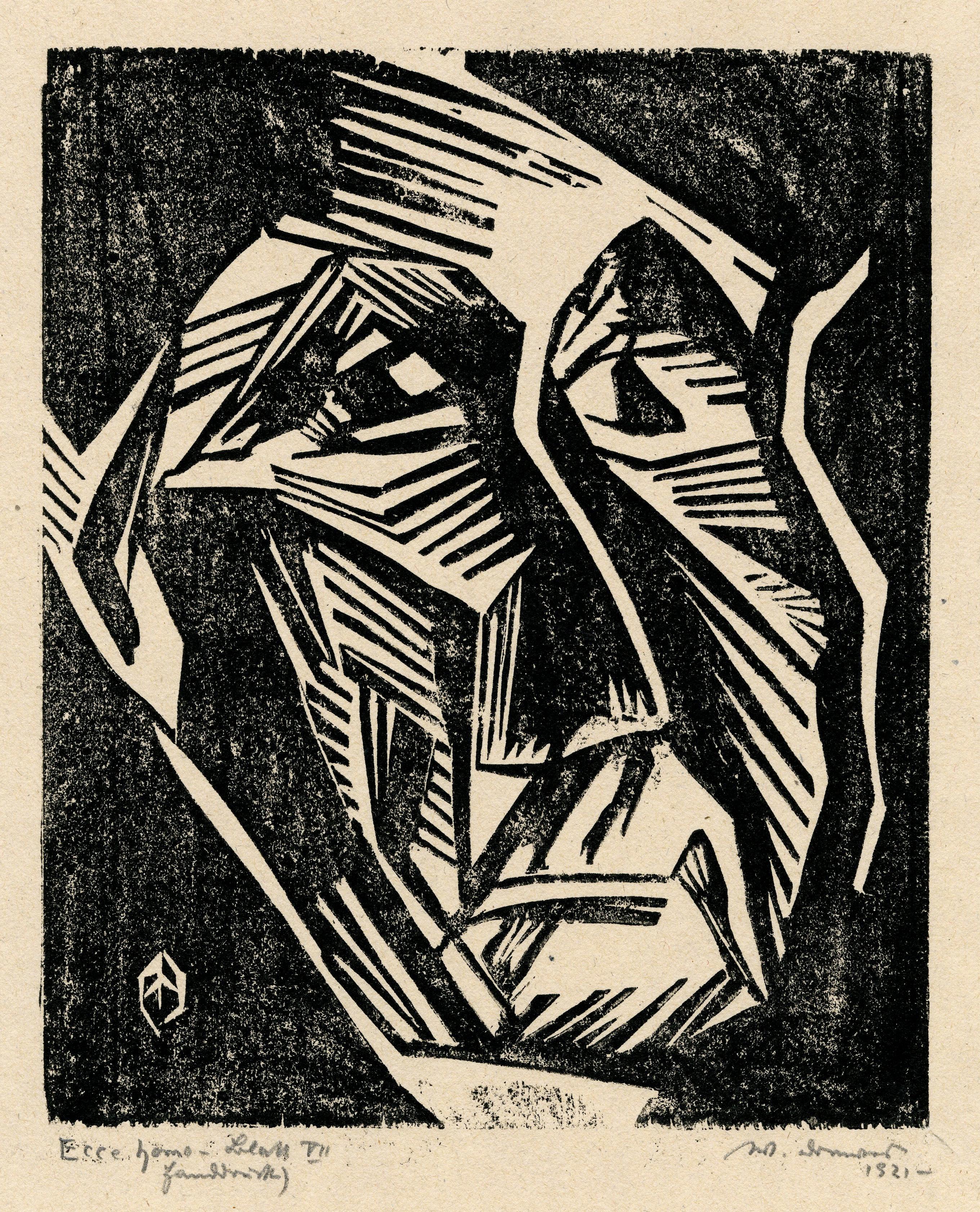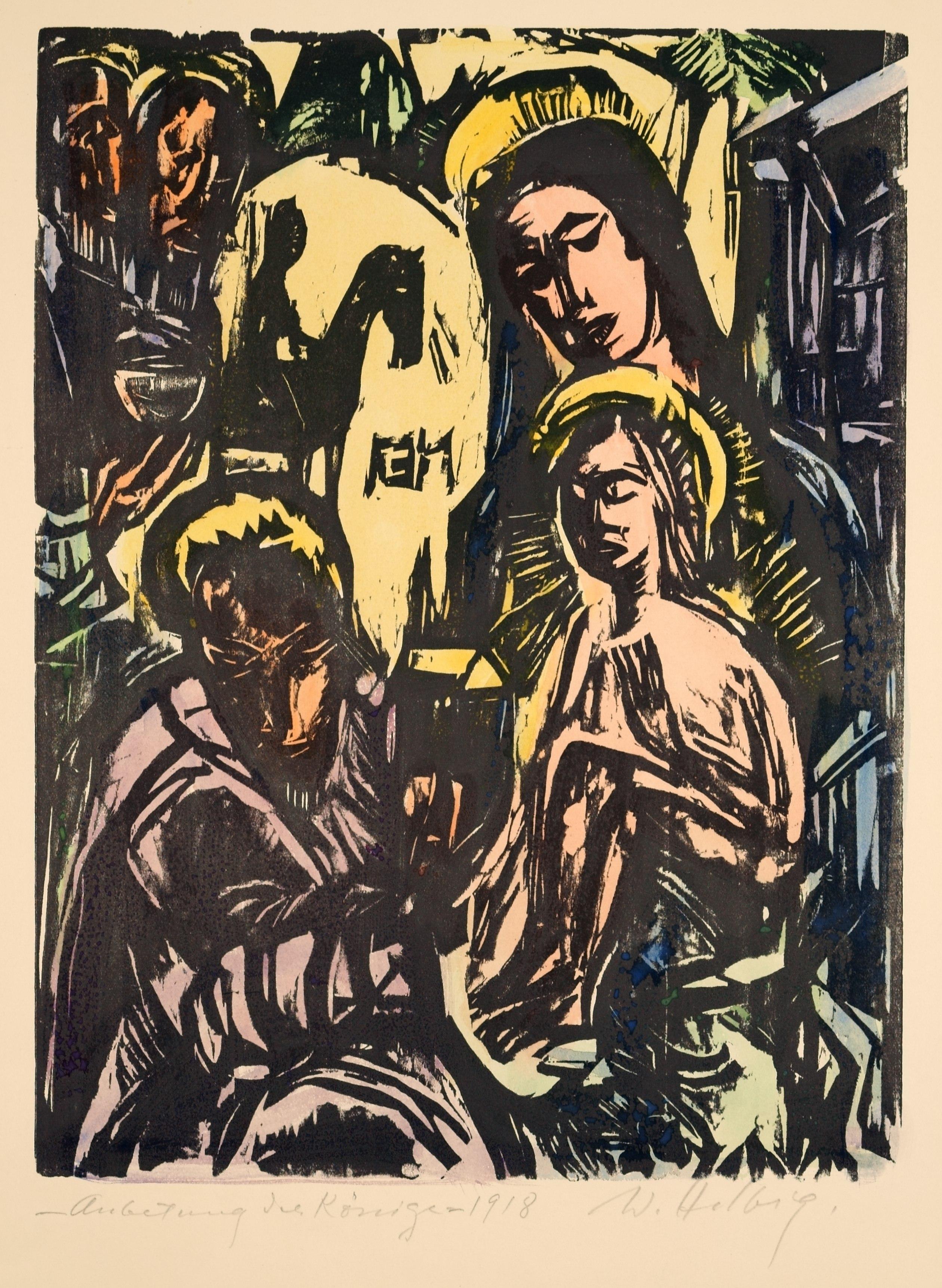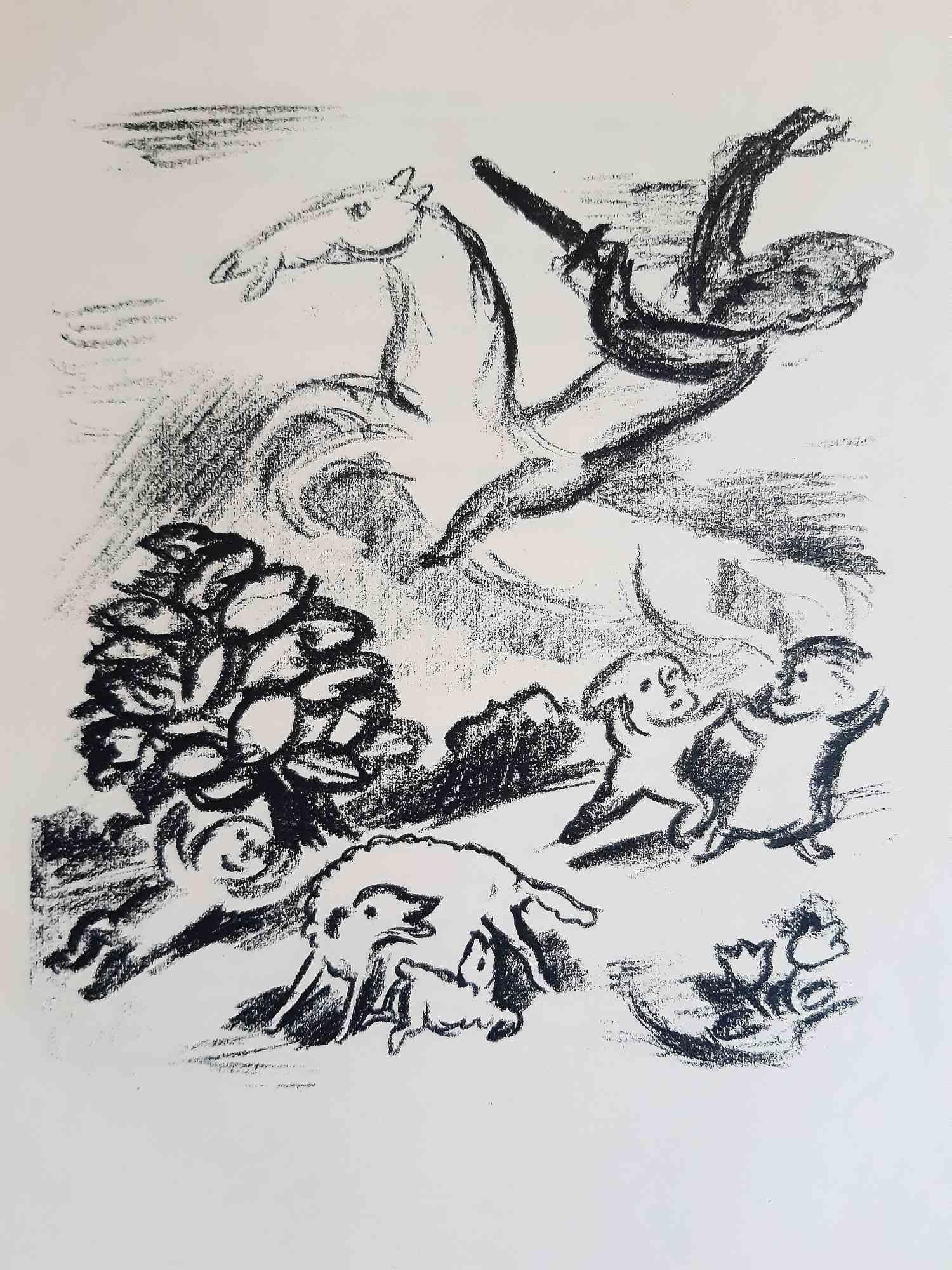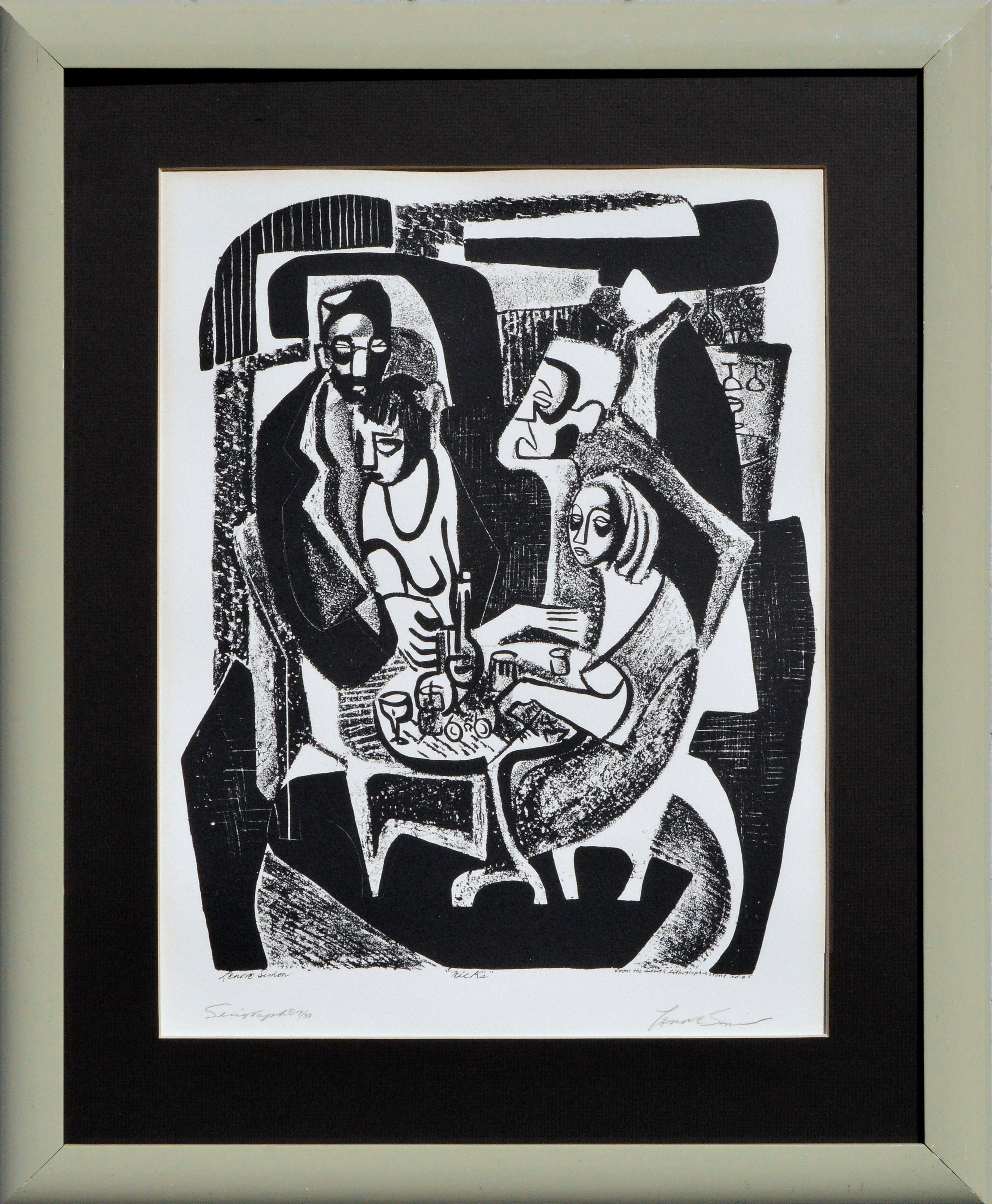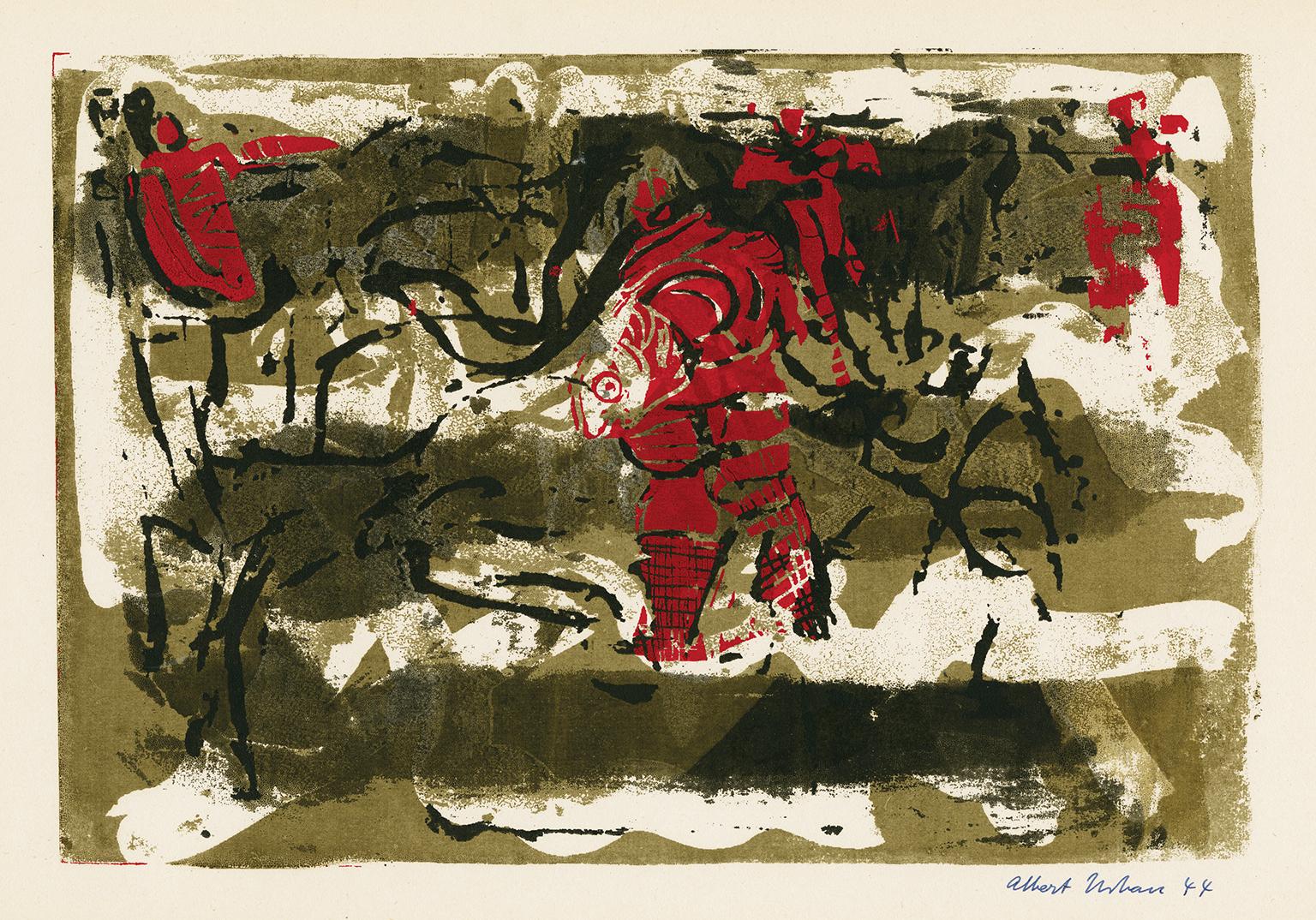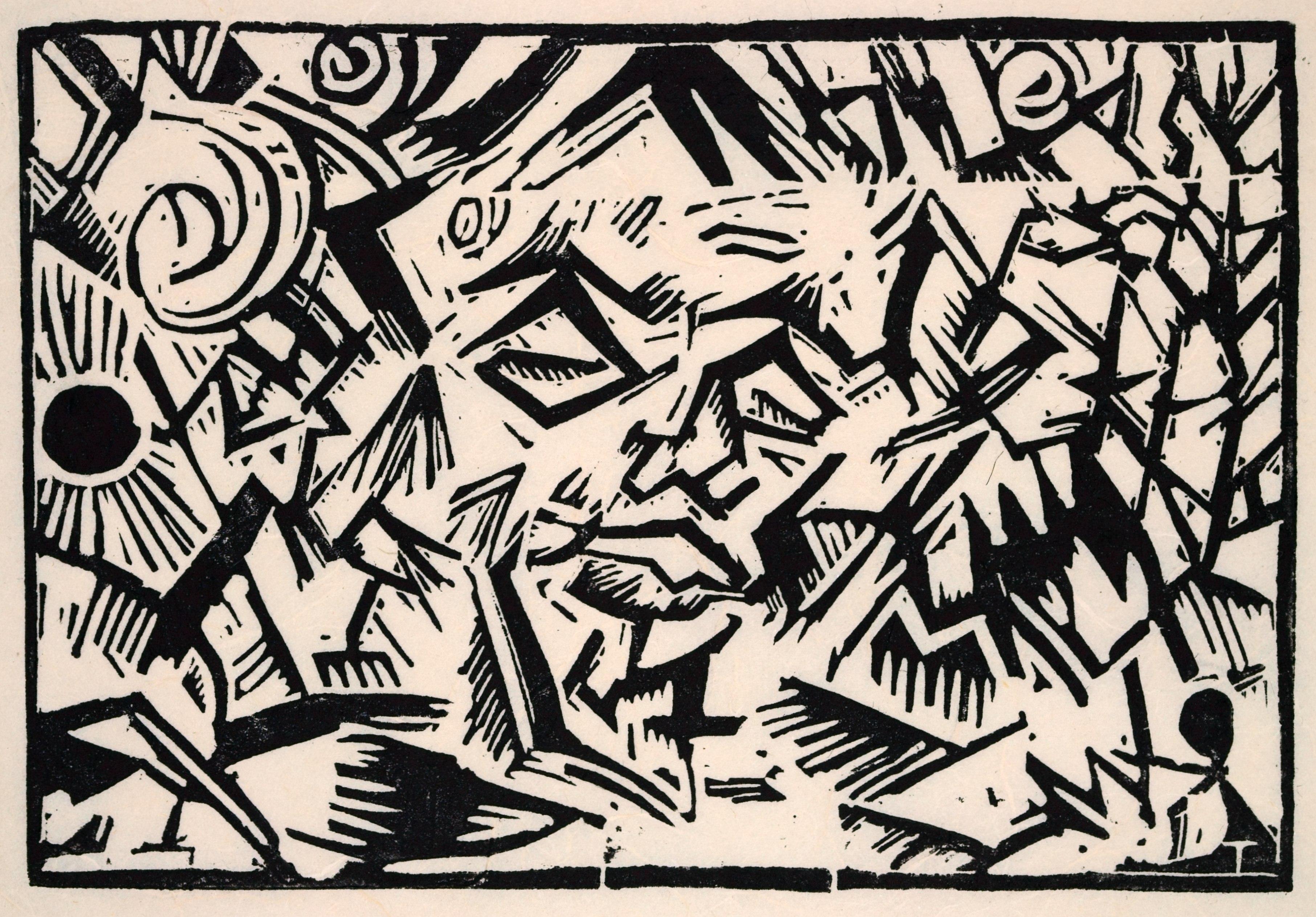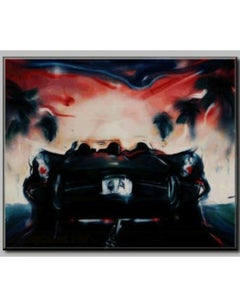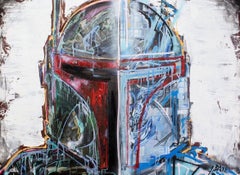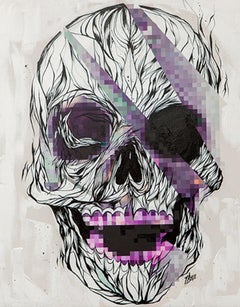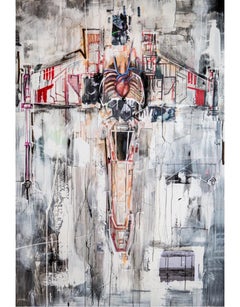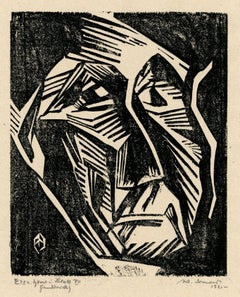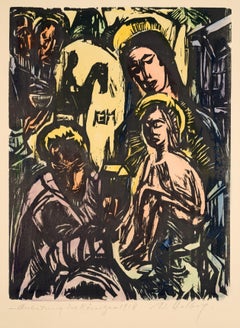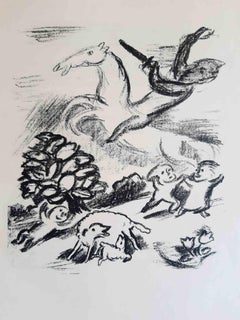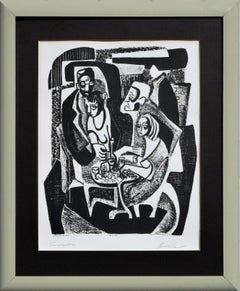Items Similar to Rollin With the Homies, Recent Works by Tom Everhart (Signed Poster)
Want more images or videos?
Request additional images or videos from the seller
1 of 5
Tom EverhartRollin With the Homies, Recent Works by Tom Everhart (Signed Poster)2013
2013
About the Item
35" x 24" Unframed
Rolling With the Homies Recent Works Poster
Hand Signed by Tom Everhart
2013
- Creator:Tom Everhart (1952, American)
- Creation Year:2013
- Dimensions:Height: 35 in (88.9 cm)Width: 24 in (60.96 cm)
- More Editions & Sizes:Open edition Hand Signed Price: £192
- Movement & Style:
- Period:
- Framing:Framing Options Available
- Condition:
- Gallery Location:Toronto, CA
- Reference Number:1stDibs: LU2177213213072
Tom Everhart
TOM EVERHART was born on May 21, 1952 in Washington, D.C. He began his under graduate studies at the Yale University of Art and Architecture in 1970. In 1972 he participated in an independent study program under Earl Hoffman at St. Mary’s College. He returned to the Yale School of Art and Architecture in 1974 where he completed his graduate work in 1976, followed by post-graduate studies at the Musee de l’Orangerie, in Paris. He taught Life Drawing and Painting, briefly from 1979 to 1980, at Antioch College. In 1980, Tom Everhart was introduced to cartoonist Charles M. Schulz at Schulz’s studios in Santa Rosa, California. A few weeks prior to their meeting, Everhart, having absolutely no education in cartooning, found himself involved in a freelance project that required him to draw and present Peanuts renderings to Schulz’s studios. Preparing as he would the drawings and studies for his large-scale skeleton / nature related paintings; he blew up some of the cartoonist’s strips on a twenty-five foot wall in his studio which eliminated the perimeter lines of the cartoon box, leaving only the marks of the cartoonist. Schulz’s painterly pen stroke, now larger than life, translated into painterly brush strokes and was now a language that overwhelmingly connected to Everhart’s own form of expression and communication. Completely impressed with Schulz’s line, he was able to reproduce the line art almost exactly, which in turn impressed Schulz at their meeting. It was directly at this time that Everhart confirmed his obsession with Schulz’s line art style and their ongoing relationship of friendship and education of his line style. A few years later, while still painting full-time on his previous body of work in his studio, Everhart began drawing special projects for Schulz and United Media, both in New York and Tokyo. These authentic Schulz-style drawings included covers and interiors of magazines, art for the White House, and the majority of the Met Life campaign. When Everhart was not painting, he was now considered to be the only fine artist authorized and educated by Schulz to draw the actual Schulz line. The paintings using Charles Schulz’s comic strip, Peanuts, as subject matter began and replaced the skeleton and nature related paintings in 1988. The inspiration came to Everhart in Johns Hopkins Hospital, where he was undergoing several operations for stage 4 colon / liver cancer in the summer of 1988. Everhart recalls lying in a hospital bed surrounded by enough flowers to open a florist shop, piles of art books and a stack of Peanuts comic strips sent to him by Schulz. The light streaming in from the window almost projected the new images of his future Schulz inspired paintings on the wall. All the images in Everhart’s work are in some respect derived from Schulz’s Peanuts comic strip.
About the Seller
5.0
Gold Seller
Premium sellers maintaining a 4.3+ rating and 24-hour response times
Established in 1987
1stDibs seller since 2022
47 sales on 1stDibs
Typical response time: <1 hour
- ShippingRetrieving quote...Shipping from: Markham, Canada
- Return Policy
Authenticity Guarantee
In the unlikely event there’s an issue with an item’s authenticity, contact us within 1 year for a full refund. DetailsMoney-Back Guarantee
If your item is not as described, is damaged in transit, or does not arrive, contact us within 7 days for a full refund. Details24-Hour Cancellation
You have a 24-hour grace period in which to reconsider your purchase, with no questions asked.Vetted Professional Sellers
Our world-class sellers must adhere to strict standards for service and quality, maintaining the integrity of our listings.Price-Match Guarantee
If you find that a seller listed the same item for a lower price elsewhere, we’ll match it.Trusted Global Delivery
Our best-in-class carrier network provides specialized shipping options worldwide, including custom delivery.More From This Seller
View AllCalifornia Dreams
By Billy Dee Williams
Located in Toronto, ON
25" x 30" Unframed
Giclee Artist Proof
Hand Signed by Billy Dee Williams
Category
21st Century and Contemporary Abstract Prints
Materials
Giclée
The Mandalorian
By Johnathan Ball
Located in Toronto, ON
18" x 26" Unframed
Unique with Hand Embellishment
Hand Signed by Johnathan Ball
Category
21st Century and Contemporary Abstract Prints
Materials
Giclée
The Hedonist
By Johnathan Ball
Located in Toronto, ON
18" x 18" Unframed
Limited Edition Giclée with Hand Embellishment
Numbered of 50
Hand Signed by Johnathan Ball
Category
21st Century and Contemporary Abstract Prints
Materials
Giclée
Rebel
By Johnathan Ball
Located in Toronto, ON
18" x 24" Unframed
Limited Edition Giclée with Hand Embellishment
Numbered of 77
Hand Signed by Johnathan Ball
Category
21st Century and Contemporary Abstract Prints
Materials
Giclée
£1,227
Black Walkers
By Johnathan Ball
Located in Toronto, ON
18" x 36" Unframed
Limited Edition Giclée with Hand Embellishment
Numbered of 77
Hand Signed by Johnathan Ball
Category
21st Century and Contemporary Abstract Prints
Materials
Giclée
New Frontier
By Greg Angus
Located in Toronto, ON
Limited Edition Giclee with Hand Embellishment
Autographed by William Shatner
Signed by Greg Angus
Category
21st Century and Contemporary Abstract Prints
Materials
Canvas, Giclée
£2,147
You May Also Like
Ecce Homo VII
By Werner Drewes
Located in Fairlawn, OH
Ecce Homo VII
Woodcut, 1921
Signed, titled, and dated in pencil by the artist
One of only three known impressions
Created while the artist was studying at the Bauhaus in Weimar, Germany.
Extreme rarity-One of three know impressions
Note: In 1921 Drewes went to the Bauhaus in Weimar, where, after completing the compulsory preliminary course with Johannes Itten, he continued to study with Paul Klee, Oskar Schlemmer and Georg Muche and initially went to the wall painting workshop. He then traveled extensively through Europe, North America and Asia. After returning to Germany in 1927, he went back to the Bauhaus, this time to his new location in Dessau, where he studied in the classes of László Moholy-Nagy and Wassily Kandinsky. He was one of the first artists to introduce the groundbreaking concepts of the Bauhaus School in the United States through his painting, printmaking, and teaching.
Condition: Excellent
Missing small voids in the upper margin from removal of the original hinges.
Image size: 9 7/8 x 8 3/16 inches
Reference: Rose 30
Provenance: From the estate of Drewes's teacher at the Bauhaus. During the pasot WW2 the professor lived in East Germany.
WERNER DREWES
1899-1985
Werner Drewes initially studied architecture before enrolling, in 1921-22, at the Bauhaus in Weimar under Klee, Kandinsky, Itten and Feininger. For four years - 1923 to 1927 - he travelled the world with his bride, before completing his Bauhaus training in Dessau in 1929. He immigrated to the United States in 1930, documenting that move to New York through series of woodcuts. In 1936/37 he was an active founder of the American Abstract Artists and participated in the Federal Arts Project in New York before moving on to a teaching career at Washington University in St. Louis.
As an artist for over sixty five years, he employed various media from drawing and watercolor, through woodcut and etching, to painting and collage. Translating an early interest in subjective cubistic forms, his work evolved into nonobjective abstraction. He was creative until the day of his death.
Courtesy: Toby C. Moss
Werner Drewes (1899–1985) was a painter, printmaker, and art teacher. Considered to be one of the founding fathers of American abstraction, he was one of the first artists to introduce concepts of the Bauhaus school within the United States. His mature style encompassed both nonobjective and figurative work and the emotional content of this work was consistently more expressive than formal. Drewes was as highly regarded for his printmaking as for his painting. In his role as teacher as well as artist he was largely responsible for bringing the Bauhaus aesthetic to America.
Early life and education
Drewes was born in 1899 to Georg Drewes, a Lutheran pastor, and Martha Schaefer Drewes. The family lived in the village of Canig within Lower Lusatia, Germany. From age eight to eighteen he attended the Saldria Gymnasium, a boarding school in Brandenburg an der Havel. There, he showed talent both for painting and woodblock printing. Graduating from Saldria in 1917, he was drafted by the German army and served in France from then until the close of the war. About this period of his life he is reported to have said that the horrors of life at the front were only made tolerable by his sketchbook, a copy of Goethe's Faust and a volume of Nietzsche.
For a decade following the close of the war he studied, made paintings and prints, and traveled widely. His friend, Herwarth Walden, helped shape his appreciation for expressionist literature and art. Walden produced the quarterly magazine, Der Sturm and ran a gallery of contemporary art, Galerie Der Sturm, from which, in 1919, Drewes purchased an expressionist painting by William Wauer titled Blutrausch (Bloodlust). In the same year he made the acquaintance of Heinrich Vogeler and participated in Vogeler's socialist utopian artists' commune, Barkenhoff, at Worpswede, Lower Saxony. In 1919 Drewes also enrolled at the Königlich Technischen Hochschule Charlottenburg to study architecture and the following year he studied the same subject at the Technischen Hochschule Stuttgart. Preferring art over architecture, he then enrolled in Stuttgart's school of applied arts (Kunstgewerbeschule) where he studied life drawing and learned to work with colored glass. At this time he joined a group of artists and architects associated with the newly formed Merz Akademie, a college of design, art, and media in Stuttgart.
In 1921 his friendship with a French artist, Sébastien Laurent, led him to begin studies in Weimar at Bauhaus, then a new school which taught an integrated approach to the fine and applied arts. His instructors were Johannes Itten and Lyonel Feininger, whose paintings were expressionist and abstract, and Paul Klee, who taught bookbinding, stained glass, and murals. While at Bauhaus Drewes produced a portfolio of ten woodblock prints entitled "Ecce Homo."
In 1923 and 1924 he studied art during travels throughout Italy, Spain, the United States, and Central America and in 1926 he traveled to San Francisco, Japan, and Korea, thence taking the Trans-Siberian railway to Manchuria, Moscow, and Warsaw. He later said the El Grecos he saw proved to be most influential in his work. While traveling, he exhibited: (1) etchings in Madrid (1923) and Montevideo (1924), oils and etchings in Buenos Aires and St. Louis (1925), and (3) etchings in San Francisco (1926). He paid his way by the sales these exhibits produced and by taking commissions to paint portraits. While in San Francisco he set up a shop from which he sold prints he had made in Spain and South America.
After his return to Germany in 1927 he resumed study at Bauhaus, which had been forced to relocate in Dessau, Saxony-Anhalt. His instructors at that time were László Moholy-Nagy (metal work), Wassily Kandinsky, and (painting), and Lyonel Feininger (prints). At this time he also worked and exhibited in Frankfurt. With the rise of Nazism abstract artists found it increasingly difficult to sell their work and, in 1930, Drewes, finding the political pressure unbearable, emigrated to the United States. There, despite the world economic crisis, Drewes was able to earn a living as a professional artist.
Mature style
After Drewes moved to New York, Kandinsky, who was both friend and mentor, continued to exert a strong influence over his style. Later in life he said he had a hard time getting away from Kandinsky's influence as he developed his own style. In time he was able to bring a more emotional approach to his work and to base it, more than Kandinsky did, on natural forms.
In 1930 Drewes had a solo exhibition at the 135th Street Branch of the New York Public Library and a two-person show at the S.P.R. Penthouse Gallery...
Category
1920s Expressionist Abstract Prints
Materials
Woodcut
Adoration of the Magi / - The Rider of the Sun -
Located in Berlin, DE
Walter Helbig (1878 Falkenstein - 1968 Ascona), Adoration of the Magi, 1918. Hand-colored linocut, 30 cm x 22.5 cm (depiction), 50 cm x 35 cm (sheet size), signed “W.[alter] Helbig” in pencil lower right, inscribed “Adoration of the Magi” lower left and dated “1918”. Below this a handwritten dedication “with heartfelt Christmas greetings”.
- Paper somewhat darkened and with slight creases, thumbtack holes in the corners
- The Rider of the Sun -
The 'apocalypse' of World War I brought about a return to sacred art. Walter Helbig belonged to the circle of the 'Brücke' and the 'Blauer Reiter'. With his reinterpretation of religious themes in an expressionist formal language, Helbig shaped an avant-garde neo-sacred art. This is symbolically expressed in the silhouette of the rider against the sun-like yellow background. It refers to the awakening initiated by the Blue Riding, which is now linked back to the sacred.
The rider and horse "look" at Mary and the Christ Child, who occupy the entire field. Opposite them are the three kings, the eldest of whom kneels before Christ and offers him a gold-filled casket. The expressionist lines give rise to a tower that rises into the "sun", so that the gift has become a Gothic church, expressing the hope that the fallen world will be resurrected in the name of Christ. This dimension of meaning is emphasized by the magical effect of the color scheme.
About the artist
In 1895, Walter Helbig began studying at the Dresden Academy of Art, where he became friends with the future Brücke artist Otto Müller, with whom he lived in Dresden from 1903 to 1905. While studying in Italy from 1897 to 1899, he met Arnold Böcklin and Adolf von Hildebrand. After completing his studies, he first worked for Otto Gussmann, painting churches. From 1905 to 1909 he worked as a freelance painter in Hamburg. In 1909, through the mediation of Otto Müller, Helbig made the acquaintance of artists from the 'Brücke'. In 1910 he exhibited at the founding exhibition of the Berlin 'Neue Sezession'. In the same year, he moved to Switzerland, where, together with Hans Arp and Oscar Lüthy, he founded the 'Moderne Bund' in Weggis, to which Cuno Amiet and Giovanni Giacometti also belonged. At the second exhibition of the 'Moderne Bund' in Zurich in 1911, Henri Matisse and Robert Delaunay were represented alongside artists from the 'Blauer Reiter'. In 1913, Helbig traveled to Paris with Arp and Lüthy. After the dissolution of the 'Moderne Bund', Helbig was represented at the first Dada exhibition in Zurich in 1914. In 1919, he joined the Berlin 'Novembergruppe'. After the devastation of World War I, Helbig turned increasingly to religious themes in his work. In 1924, like many other artists of his time, he moved to Ascona for financial reasons, where he became a naturalized citizen in 1938. There he founded the artists' association "The Great Bear", to which Marianne von Werefkin...
Category
1910s Expressionist Figurative Prints
Materials
Paper
Die Lilienweisse Stute - Lithographs by Otto Schubert - 1920
By Otto Schubert
Located in Roma, IT
Die Lilienweisse Stute is an book written by Carl Hauptmann (Obersalzbrunn, 1858 - Schreiberhau, 1921) and illustrated by Otto Schubert (born January 29, 1892 in Dresden - June 12, 1...
Category
1920s Expressionist Abstract Prints
Materials
Paper, Lithograph
Nick's Coffee House in the Village - Rare Edition 1970s Modern Figurative Print
By Lenore SImon
Located in Soquel, CA
This bold screen print depicts a scene from the 1950s, set in a jazz coffee house in Greenwich Village called Nick's, which Simon patronized while in high school. The original stone ...
Category
Late 20th Century Expressionist Figurative Prints
Materials
Archival Paper, Screen
Untitled Abstraction (Figures in Red)
By Albert Urban
Located in Myrtle Beach, SC
Albert Urban, Untitled Abstraction (Figures in Red), color serigraph, 1944. Signed and dated in blue ink. A fine, painterly impression, with fresh, rich colors, on cream wove paper;...
Category
1940s Expressionist Abstract Prints
Materials
Screen
Head / - Mental thunderstorm of war -
By Georg Tappert
Located in Berlin, DE
Georg Tappert (1880 Berlin - 1957 Berlin), Head, 1918 (1964). Wietek 110. Estate print from 1964. Linocut on Japan, 17 cm x 24.5 cm (depiction), 24 cm x 31.5 cm (sheet size), marked ...
Category
1910s Expressionist Figurative Prints
Materials
Paper
